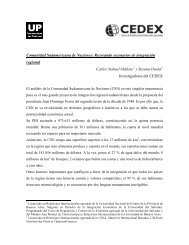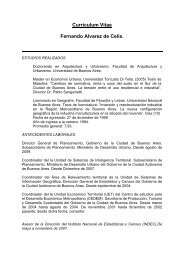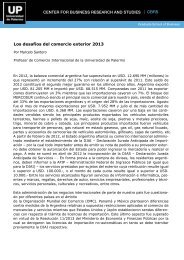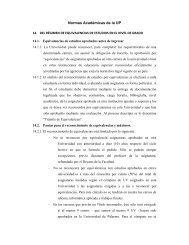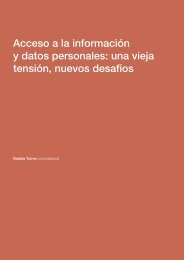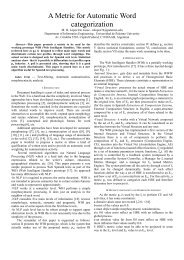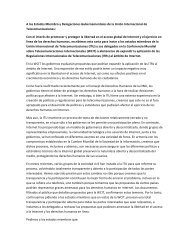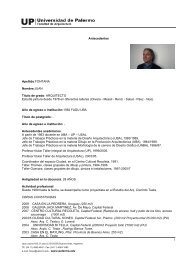historico movimiento de la television movil en el reino unido
historico movimiento de la television movil en el reino unido
historico movimiento de la television movil en el reino unido
Create successful ePaper yourself
Turn your PDF publications into a flip-book with our unique Google optimized e-Paper software.
optimized for mass <strong>de</strong>livery of multimedia cont<strong>en</strong>t to mobile <strong>de</strong>vices. FLO <strong>en</strong>ables effici<strong>en</strong>t<br />
<strong>de</strong>livery of up to 15 chann<strong>el</strong>s of QVGA vi<strong>de</strong>o at 30 frames per second, with additional capacity<br />
for audio services, clip cast vi<strong>de</strong>o, and g<strong>en</strong>eral IP datacasting to both CDMA2000 and W-CDMA<br />
handsets. Qualcomm b<strong>el</strong>ieves the FLO technology will be more cost effective for mobile<br />
multimedia cont<strong>en</strong>t distribution than competing technologies such as DVB-H.<br />
One-Seg<br />
One-Seg or 1seg is a Japanese standard for digital terrestrial broadcasting aimed at mobile<br />
<strong>de</strong>vises such as handsets. The service started on April 1st, 2006. nitially called 'one segm<strong>en</strong>t<br />
broadcast it has be<strong>en</strong> abbreviated. Because it is small, broadcasters can transmit only a low<br />
resolution picture of QVGA size. It is hoped that One-Seg can be tied into regu<strong>la</strong>r applications<br />
such as email or take advantage of location based information via GPS, for example. It is a<br />
variant of ISDB-T and is oft<strong>en</strong> <strong>de</strong>scribed as ISDBT- 1.<br />
S-DMB<br />
The sat<strong>el</strong>lite version of DMB - S-DMB (Sat<strong>el</strong>lite Digital Multimedia Broadcasting) - is already<br />
offered in South Korea. It's curr<strong>en</strong>tly the most successful mobile broadcast TV service and has<br />
be<strong>en</strong> put together by SK T<strong>el</strong>ecom's TU Media subsidiary and Japan's Mobile Broadcasting<br />
Corporation. The service had attracted around 372,000 subscribers by Q1 2006 and is aiming<br />
for one million subscribers by Q1 2007. It's not a trial because Koreans pay around £11.39 to<br />
join the service and £7.40 per month to view it. There's one major drawback, of course. The<br />
whole thing is <strong>de</strong>p<strong>en</strong><strong>de</strong>nt on just one single sat<strong>el</strong>lite and it's pointing at Korea.<br />
T-DMB<br />
Based on DAB (Digital Audio Broadcast), which is familiar as the standard for digital radio<br />
stations, the mobile broadcast variant has be<strong>en</strong> termed T-DMB (Terrestrial – Digital Mobile<br />
Broadcast). Significantly T-DMB w<strong>en</strong>t live in Korea in May 2005. Versions of this technology<br />
are being trialled in Europe – including the Mi Fri<strong>en</strong>ds project for the World Cup in Germany<br />
(Reg<strong>en</strong>sburg). LG has already announced the V9000 for T-DMB and Samsung could easily<br />
convert T-DMB mo<strong>de</strong>ls it s<strong>el</strong>ls in Korea.<br />
TDtv<br />
TDtv allows operators to <strong>de</strong>ploy a broadcast vi<strong>de</strong>o solution using their existing TDD spectrum<br />
lic<strong>en</strong>ses, harmonised across Western Europe. It also allows the carrier full control of about 15<br />
chann<strong>el</strong>s of QVGA, instead of forcing them to partner/share with a broadcast company. The<br />
MBMS broadcast architecture supports an effici<strong>en</strong>t economic mo<strong>de</strong>l. TDtv is lik<strong>el</strong>y to be an<br />
acc<strong>el</strong>erator for UMTS TDD technology in g<strong>en</strong>eral. (See UMTS TDD Alliance www.umtstdd.org)<br />
52





